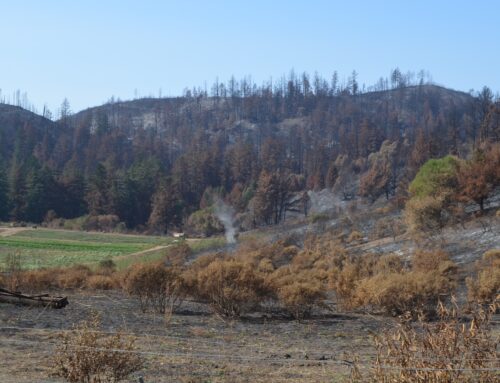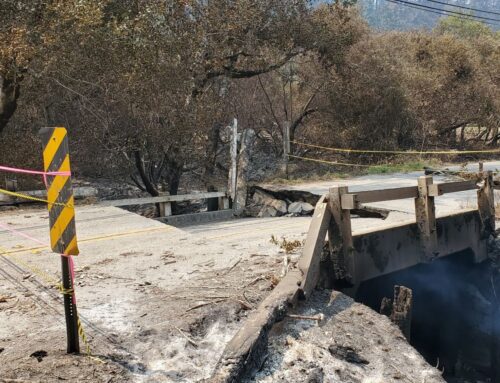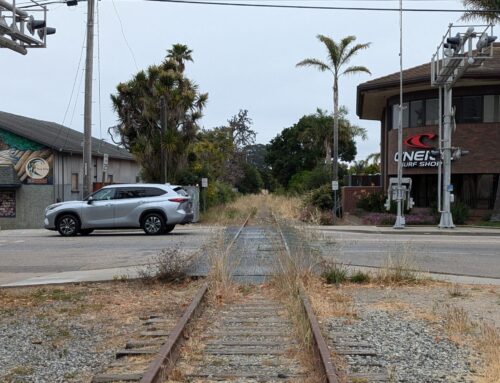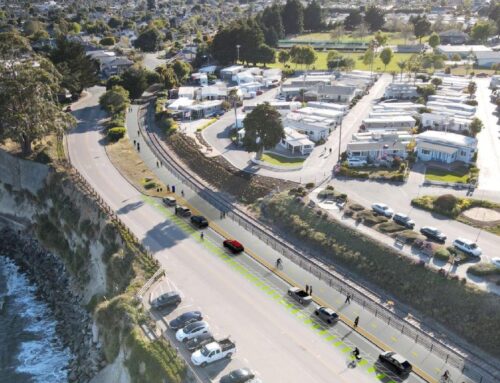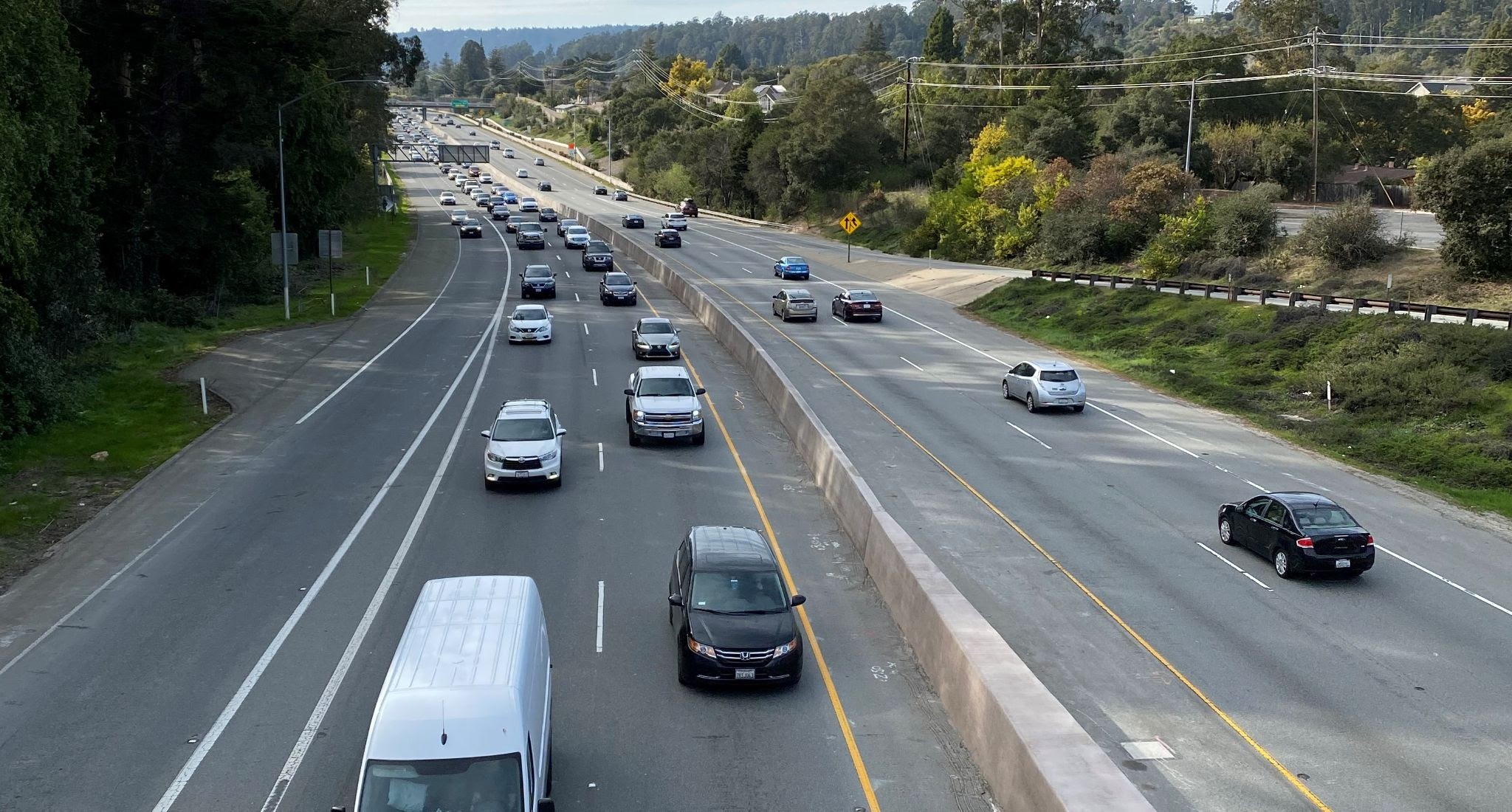
Transportation is the largest source of greenhouse gas emissions in Santa Cruz, Watsonville and unincorporated Santa Cruz County, according to city and county reports. (Jacob Meyberg Guzman — Santa Cruz Local file)
SANTA CRUZ >> Santa Cruz, Watsonville and Santa Cruz County leaders have three plans in the works to try to limit some expected problems from climate change.
The climate plans try to address events like wildfires, droughts, sea-level rise and destructive storms that are expected with more ferocity in the coming years. The action and adaptation plans also try to harness the purchasing power of Santa Cruz County government and the cities of Santa Cruz and Watsonville. Some of the plans make pledges to construct all-electric buildings, make most of their vehicle fleets electric and cut spending on natural gas and gasoline.
“One of the things we want to recognize is that climate change is here and we are experiencing it,” said Dave Reid, director of Santa Cruz County’s Office of Response, Recovery and Resilience. The county department was formed in late 2020 to help prepare for disasters, respond to emergencies and help with recovery efforts.
“We want to really look at adaptation strategies,” Reid said. “Because we see and feel climate change is happening to our community and to our infrastructure now through things like the CZU (Lightning Complex) Fire and these major rain events,” Reid said.
- Last year, the Watsonville City Council approved its Climate Action and Adaptation Plan with goals and strategies for the year 2030.
- Santa Cruz County Supervisors approved a Climate Action Strategy in 2013. An updated version of the plan is expected to be considered by county supervisors in December.
- Santa Cruz city leaders hope to approve a climate plan by August.
Santa Cruz city and county leaders said they have been working closely with the Watsonville planners to align the three climate plans.
Similarities in the three climate plans
Some common themes have emerged in Watsonville’s approved plan and the climate plans proposed at the city of Santa Cruz and Santa Cruz County.
In the three areas, inventories of greenhouse gas emissions produced by residents, businesses and the government show similar problems. Transportation produces most of the greenhouse gas emissions in Watsonville, Santa Cruz and unincorporated Santa Cruz County. Gas-powered vehicles release carbon dioxide, which contributes to global warming.
- In Watsonville, city leaders said that about 53% of greenhouse gas emissions are from transportation such as cars.
- In the city of Santa Cruz, transport is about 69% of emissions.
- In unincorporated Santa Cruz County, vehicles account for 50.8% of emissions.
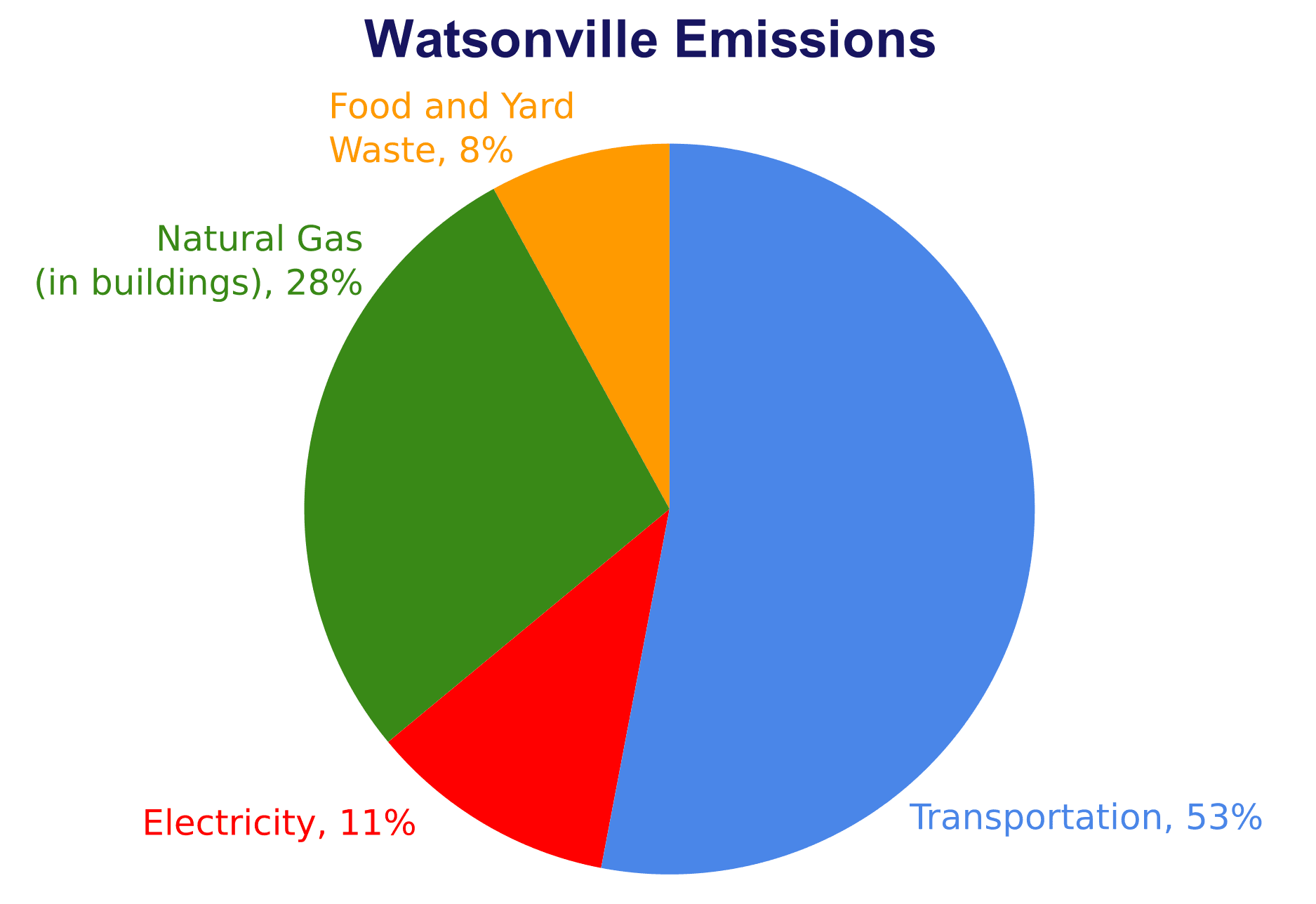
Watsonville city leaders report that more than half of the city’s total greenhouse gas emissions come from transportation. (City of Watsonville)
The second largest emissions source in all three areas is home energy such as natural gas. Alex Yasbek, Watsonville’s environmental projects manager, said natural gas will be a challenge to replace.
“The bottom line is it’s the fossil fuel. It’s essentially methane,” Yasbek said of natural gas. “It’s our largest source of greenhouse gas emissions after transportation, and it’s used everywhere from power generation to water heaters, stoves and heating in your home. It’s everywhere.”
Watsonville’s approved plan and the proposals in the city of Santa Cruz and Santa Cruz County also referenced:
- Conversions to all-electric government vehicle fleets.
- Incentives for residents to buy electric vehicles.
- Bans on natural gas in new buildings. The plans call for all-electric heating and cooking in new homes and conversions to all-electric systems in older buildings. Santa Cruz city leaders already have adopted a natural gas prohibition for new buildings.
- The plans discuss equity for people most vulnerable to climate change problems. For instance, there could be reduced or low-cost ways for low-income residents to make changes to their homes.
Some of these strategies were in Santa Cruz County’s 2013 Climate Action Strategy, but updates this year are expected to include more aggressive adaptation goals.
“It all comes down to finding the programs where it’s a no-brainer for a resident to make that switch,” said Yasbek, of Watsonville. “You’re going to end up with better indoor air quality, better heating, better cooling, better cooking, and you’re going to pay less at the end of the month in your utility bills,” Yasbek said.
Another big change for all three areas is the recent formation of Central Coast Community Energy. Although Santa Cruz County residents pay bills to Pacific Gas & Electric Co. most residents’ energy is sourced through Central Coast Community Energy. A purpose of the multi-county entity is to provide energy from more renewable sources than natural gas. It’s on track to source all of its energy from renewable sources by 2030.
Watsonville and Santa Cruz city staff said the effort will help the region reduce emissions related to climate change.
Watsonville’s plan
In Watsonville, the city’s climate action plan has three main parts:
- Reduce fossil fuel use to cut greenhouse emissions.
- Adapt and prepare for climate change.
- Reverse the effects of climate change.
To help reduce fossil fuel use, Watsonville’s plan calls for several changes by 2030 — but many still need funding.
- Build more bike lanes and urban designs that encourage walking.
- A bike share program by the end of this year.
- Plans to convert community centers and some homes from natural gas to all electric.
- Add two community gardens.
- Plant more trees to help sequester carbon.
One program already has helped Watsonville residents plant more than 500 trees. A joint project of Watsonville Wetlands Watch and Watsonville Community Forest aims to plant 40,000 shade and fruit trees as part of the city’s Urban Greening Plan. A recent grant has paid for 600 trees to be given to residents.
“People are excited that we’re giving out trees,” said Yesenia Jimenez, a watershed educator and restoration specialist at Watsonville Wetlands Watch.
The program includes monthly tree giveaways and tree-care workshops for Watsonville residents who want to plant a fruit tree on their property. The trees are typically citrus varieties but the group also has given apple, guava, loquat, avocado and fig trees during different seasons, Jimenez said.
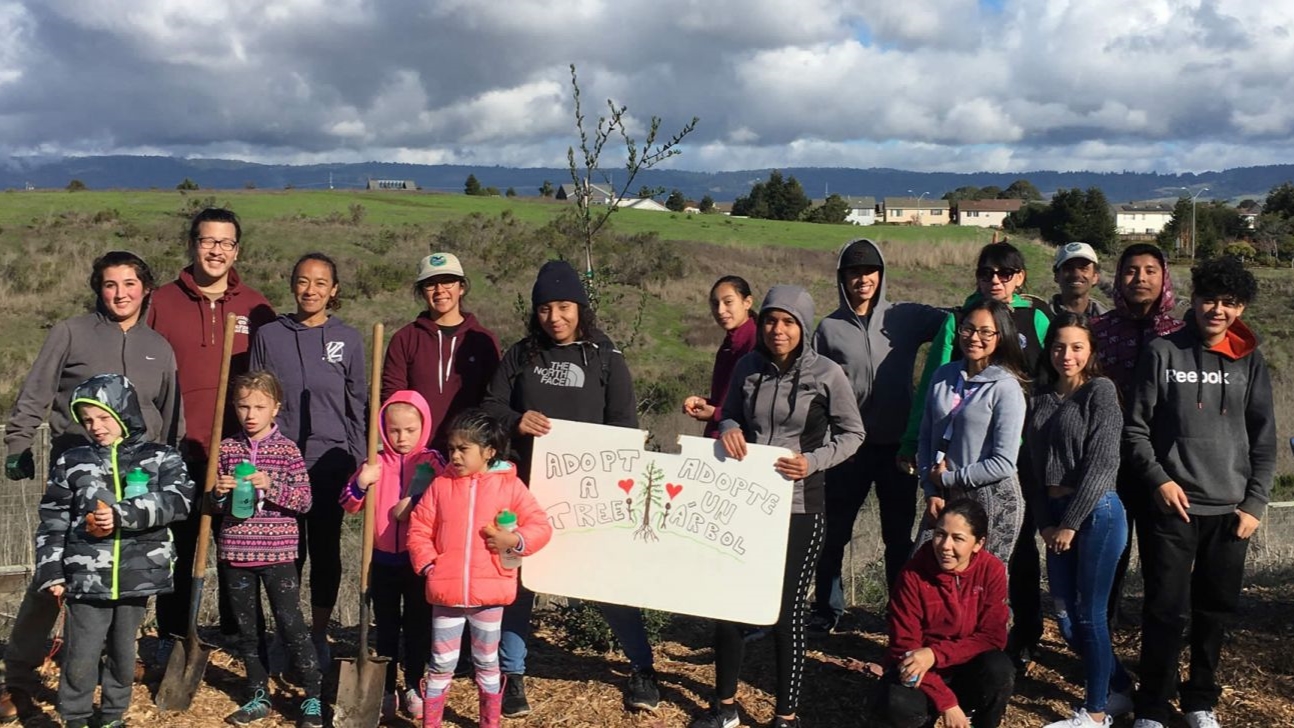
A tree planting project takes place at a community garden on Loma Vista Drive in Watsonville in 2019. (Watsonville Wetlands Watch)
Santa Cruz’s climate plan
In the city of Santa Cruz, leaders have been working on the development of a Climate Action Plan since April, said Tiffany Wise-West, the city’s sustainability and climate action manager. Wise-West said an aim is to find the most equitable path to carbon neutrality.
A city study session took place in January on greenhouse gas emission targets and other elements of a potential climate plan for the city. A draft 2030 climate action plan could include a reduction of more than 40% below the city’s greenhouse gas emissions in 1990, according to a city staff report. It aims for carbon neutrality by 2045. Carbon neutrality means the city would remove as much carbon dioxide from the atmosphere as it emits.
Although it is still in the works, Santa Cruz’s climate plan is expected to include:
- All-electric new city buildings and all-electric conversion of older city buildings. The city’s anticipated new downtown library is expected to be all electric.
- More electric vehicles.
- Reduced organic waste to the city landfill.
- Improved public transit and bike and walk infrastructure. A new bike share program is in the works too.
A draft climate action plan that describes implementation and potential funding is expected to be considered by the Santa Cruz Planning Commission in June. It is expected to be considered by the Santa Cruz City Council in August, Wise-West said.
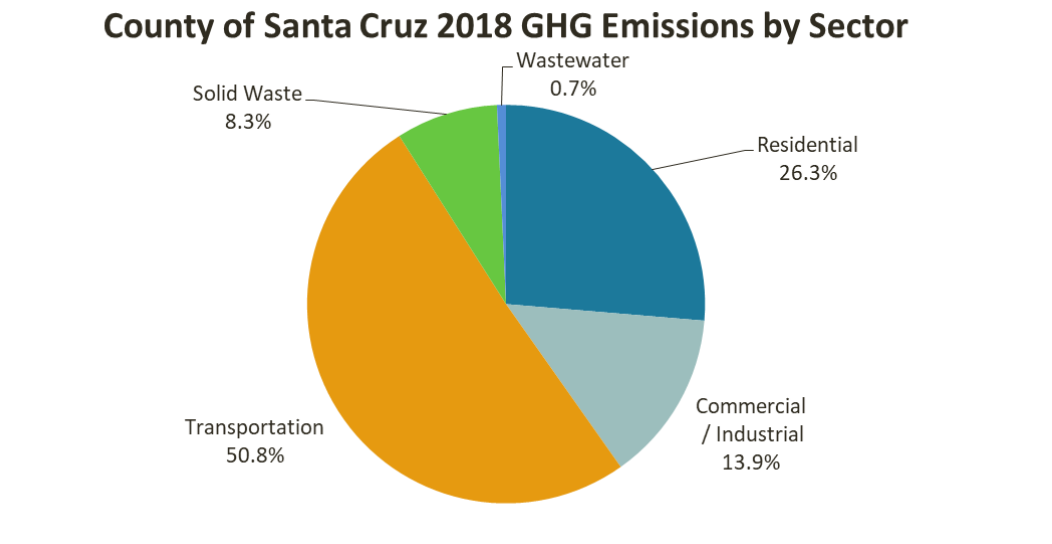
Vehicles accounted for more than half of greenhouse gas emissions in unincorporated Santa Cruz County, according to a 2018 report. (County of Santa Cruz)
Santa Cruz County’s climate plan
Santa Cruz County is trying to update its 2013 Climate Action Strategy with a broader scope, county leaders said.
“The climate strategies will be similar between the cities, particularly in terms of emission reductions,” said Reid, the county’s director of response, recovery and resilience. “But the county incorporates larger geographic areas with different land uses.”
A key difference in the county’s plan is its aim to support the region with carbon sequestration and other methods that cities cannot necessarily tackle. Carbon sequestration is the process of capturing carbon dioxide with soils, plants and other materials, to help offset emissions. Because unincorporated Santa Cruz County land includes many agricultural and timberlands, they can help draw down carbon through land use, habitat restoration or agricultural and farming practices.
We are already experiencing climate change, Reid said. He said the aim is to adapt, prepare, hopefully reduce some of the burdens of it.
County officials said the 2030 climate plan could include:
- Management of coastlines to address sea-level rise.
- Improved stormwater management systems in rural and urban areas to prepare for changes in precipitation patterns.
- To be more resilient to large wildfires, the plan aims to help rural residents and large landowners in forest management and hazardous fuel reduction.
- Provide stewardship for open spaces through controlled burns and fuel management projects.
- Help homeowners with incentives for solar panels and energy storage batteries.
Reid said he’d like to see more homeowners do things like add solar panels and change roofs and siding materials to be more resistant to fire. Managing defensible space also helps people be more prepared for forest fires, Reid added.
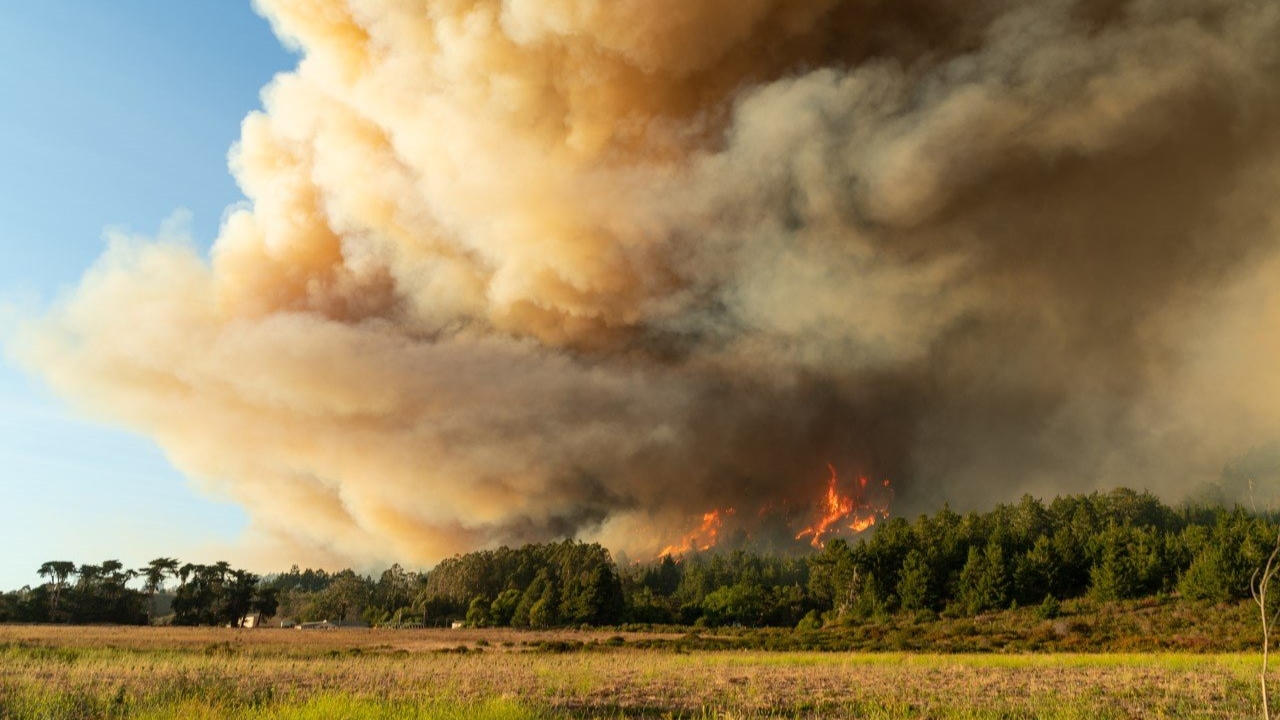
The CZU Lightning Complex Fire in 2020 destroyed more than 900 homes. Forest management, defensible space around homes and changes to home materials could help limit damage from future fires, Santa Cruz County leaders said. (Cal Fire)
Equity and climate change
In the CZU Fire in 2020, some older residents in the San Lorenzo Valley had trouble evacuating their homes or faced medical or other challenges as they tried to escape. In Watsonville, many residents have had to buy flood insurance for their homes because of inadequacies of the Pajaro River levee. More extreme weather events are expected in the coming years because of climate change, and problems for vulnerable groups could worsen if they are not addressed.
“We want to make sure that we are addressing the impacts of climate change to our community through an equity lens, and making sure and making sure that those most vulnerable are supported,” Reid said.
Santa Cruz city and county leaders will continue to work closely with Watsonville leaders to support each other and to apply for funding to implement the plans.
“The climate knows no boundaries,” said Yasbek, the Watsonville city leader. “And the consequences of climate change also know no boundaries,” he said. “We’re no longer at a place where you make a plan to make a plan to make a plan,” he said. “We really need to just start doing the things we need to be doing.”
Yasbek added that the culmination of small changes can help the community prepare for climate calamities.
“It’s hard to see, but every little bit makes a difference,” Yasbek said. “The reality is, everyone should be doing absolutely everything they can.”
How to participate
- Santa Cruz city leaders want input on about 100 actions on climate action. Building electrification, transportation and other goals are included on an online questionnaire in English and Spanish. Residents can discuss details, goals and targets and indicate their level of support or opposition.
- Public input will be collected through March 4 for the city’s draft Climate Action Plan. More information and a signup for notice emails or texts are on the city’s website.
Santa Cruz Local’s news is free. We believe that high-quality local news is crucial to democracy. We depend on locals like you to make a meaningful contribution so everyone can access our news. Learn about membership.
Brian Phan is an intern for Santa Cruz Local and a master's student in UC Santa Cruz's science communication program. Brian has written for the Monterey Herald.


